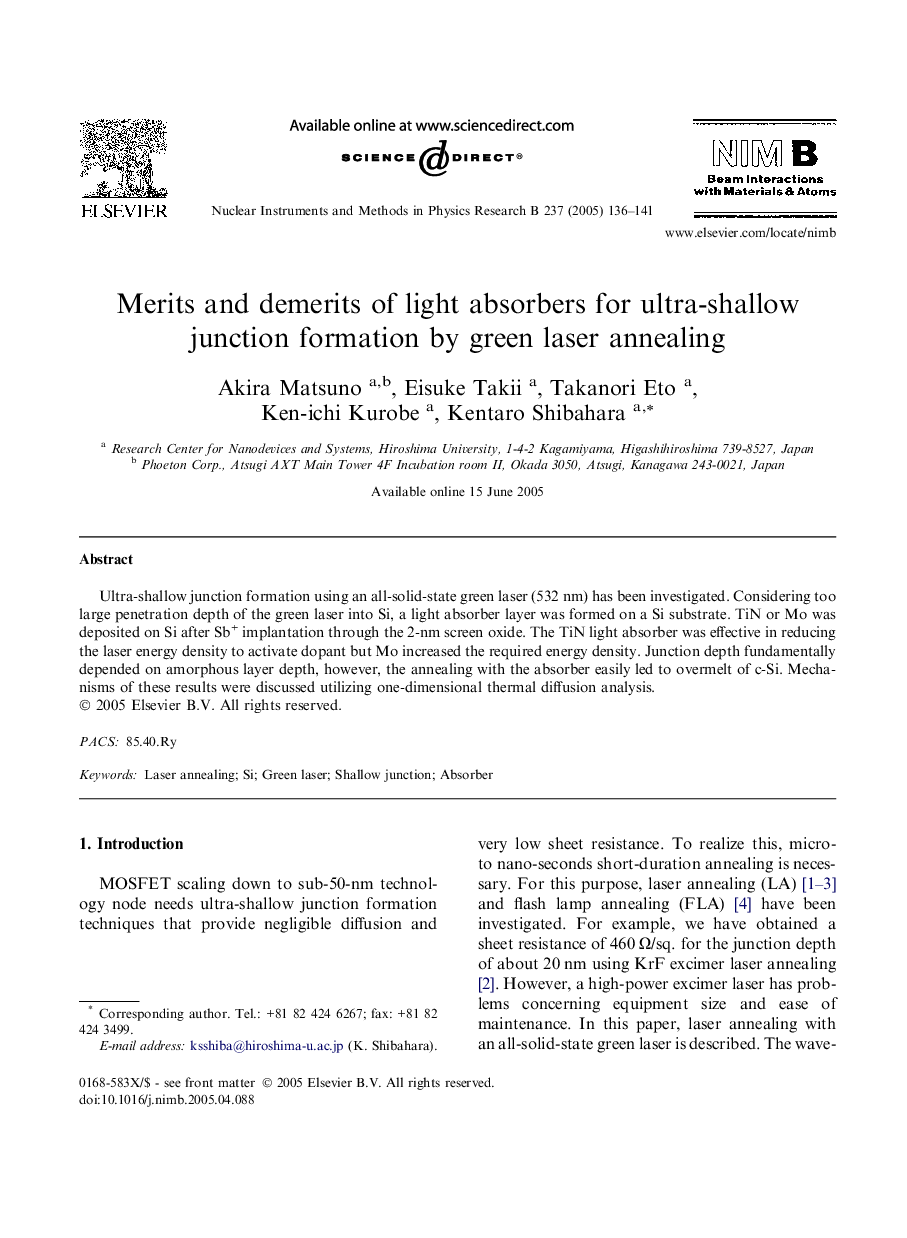| Article ID | Journal | Published Year | Pages | File Type |
|---|---|---|---|---|
| 9817735 | Nuclear Instruments and Methods in Physics Research Section B: Beam Interactions with Materials and Atoms | 2005 | 6 Pages |
Abstract
Ultra-shallow junction formation using an all-solid-state green laser (532Â nm) has been investigated. Considering too large penetration depth of the green laser into Si, a light absorber layer was formed on a Si substrate. TiN or Mo was deposited on Si after Sb+ implantation through the 2-nm screen oxide. The TiN light absorber was effective in reducing the laser energy density to activate dopant but Mo increased the required energy density. Junction depth fundamentally depended on amorphous layer depth, however, the annealing with the absorber easily led to overmelt of c-Si. Mechanisms of these results were discussed utilizing one-dimensional thermal diffusion analysis.
Related Topics
Physical Sciences and Engineering
Materials Science
Surfaces, Coatings and Films
Authors
Akira Matsuno, Eisuke Takii, Takanori Eto, Ken-ichi Kurobe, Kentaro Shibahara,
